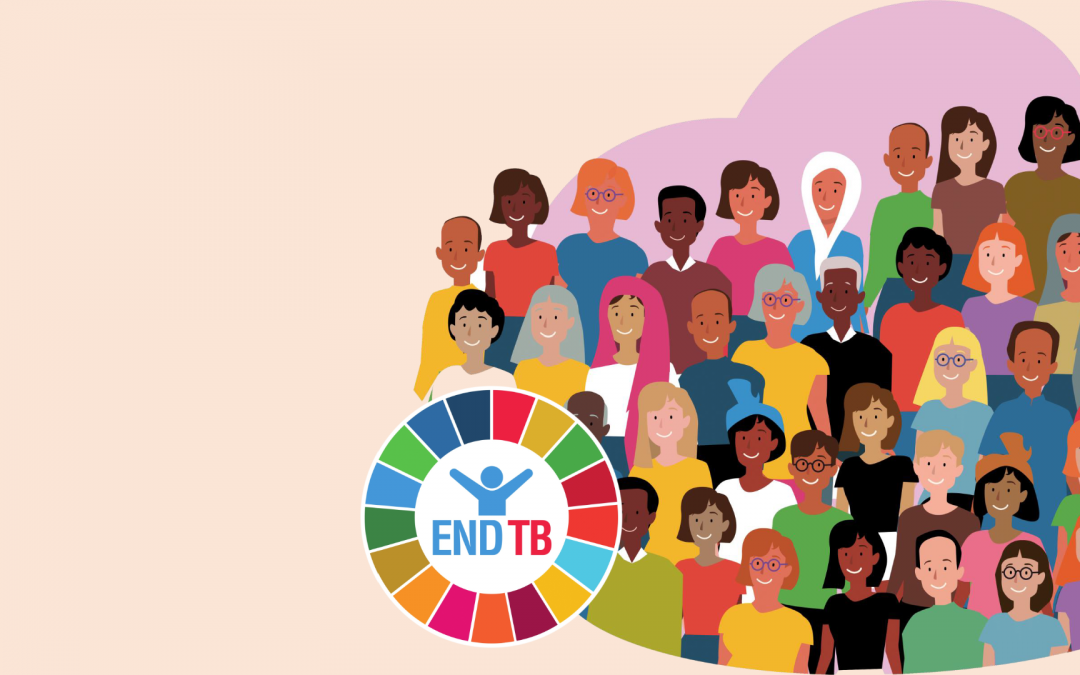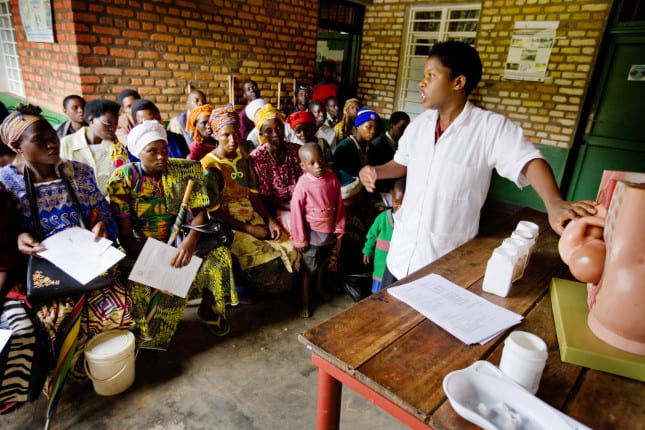
by nhe17 | Apr 14, 2022 | Dashboard
A pandemic that is targeting the under-privilege, as if the right of living and being protected from such a disease is dependent on one’s status and unfortunate living conditions.
Tuberculosis continues to be a huge peril disease against the human population and according to WHO, TB is the leading cause of death in infectious diseases killing over 1.5 million people around the world in 2020 alone, 95% of which is occurring in developing country.
The below is a reflection of the data from the world data index showing the uneven distribution of TB incidence per 100,000 in 2020 that is occurring. A steady decrease in developed countries , however a remaining major problem in developing countries.
The World Health Organization (WHO), following the guidelines of the United Nations’ Sustainable Development Goals (SDGs), plans to eradicate the pandemic by the year 2030. The goal is to reach a 90% reduction rate in the number of deaths due to TB by the year 2030, and 95% by 2035.
Actions to be taken:
- Allocate funding on providing chemoprophylaxis (the number one treatment for TB) to developing countries to increase access for the underprivilege and decrease spreading of TB.
- Adjust healthcare policies and increase campaigns for free BCG vaccination in developing countries , making it mandatory as with many developed countries
- Mass screening tests to detect dormant or active TB, to decrease spread especially with over-populated settings and among the immunosuppressants.
- Increase Awareness campaigns to educate the population on the signs and symptoms and importance of preventive measures to be taken for a better chance of survival.
The key to an end of the pandemic starts with you!
I am a healthcare worker and I urge you after this blog to do the following:
- Check your vaccination history on BCG, along with your family.
- Educate your self with the signs and symptoms: persistent cough with bloody secretions , severe chest pain and shortness of breath , weight loss and generalized weakness , fever and night sweats
- Tuberculosis may be dormant, meaning asymptomatic for years for that if you have never been tested, urgent medical screening is required.
- If you experience any of the signs and symptoms , seek immediate medical help
- Keep your distance when engaging in a conversation and avoid crowded places!

by Salem G. | Apr 14, 2022 | Dashboard, Visualization
Suicide is something no one wants to talk about, the majority of people who are feeling down don’t openly talk about it. The highest population that is being affected are countries that are surrounding Russia, and in South Africa. There are 800k people commit suicide each year, this is due to many economical issues in these countries. Imagine Karim a husband and a father of 2 living in a country where the basic human needs are neglected. Now Karim is struggling to find a job due to the high unemployment rate, this means he is not able to feed his wife and kids. Imagine being in his place in a country with a 26% unemployment rate. People that are unemployed have a higher chance of commit suicide due their mental health taking a hit this could spiral own a dark hole which is hard to come out off. Unemployment forced 40% of the population to suffer from severe or moderate food insecurity and this is the disruption of food intake or eating pattern due to the lack of money and other resources. Now Karim can’t just feed his family but also can’t get the basic human needs.
All these problems correlate strongly with the Social protection and Labor Programs when these programs are lacking the result were higher suicide mortality rate. These programs help the population in managing risks and protect them from food insecurities through various methods. Poland has a high social program and the results of the suicide mortality rate is significantly lower compared to Lesotho which is the opposite with high suicide rates and low social program . This indicates to lower suicide rates we must increase the aid to the population by offering labor market, unemployment benefits, and other programs. Now Karim can relax and calm down as help is on its way to assist him and other people who are in need.

by Zahraa Berjawi | Nov 25, 2021 | Dashboard, Visualization
FROM “Man up, you can’t be depressed just because this happened!” TO “Why are you looking so sad and tired? Are you depressed? You can talk to me if you want..”
To begin with, according to the World Bank dataset on development indicators, it is clear that men’s average suicide mortality rate is significantly higher than females.

Surprisingly, males are three times more suicidal than females, reaching an average of 14.3 male suicides per 100,000 males, while 4.4 female suicides per 100,000 females.

But why is this the case?
 While comparing countries with high unemployment rates and countries with low unemployment rates, the following analyses were investigated:
While comparing countries with high unemployment rates and countries with low unemployment rates, the following analyses were investigated:
To begin with, in Countries with highest unemployment rates, the suicide mortality rates for both men and women are higher.
However, when faced with difficult economic situations:
- Females suicide mortality rates were higher by 150%
- Males suicide mortality rates were higher by 217%
This leads to the conclusion that men’s mental health tends to be more susceptible to financial burdens.
So, what should be done?
A potential solution would be providing unemployment benefits, which are governmental compensations that are provided for unemployed people. These compensations help secure a stable income after the layoff of an employee, and they improve unemployed people’s productivity in the labor market by improving job matching and connecting employees to employers.
In addition, this solution can be helpful in mitigating the impact of unemployment on the psychological wellbeing of people.
As the following illustration shows, both females’ and males’ suicide mortality rates are higher in countries with lower adequacy and coverage of unemployment benefits

More specifically, males’ suicide rates are 31% lower in countries with high adequacy and coverage of unemployment benefits.
Thus, in order to mitigate the males’ suicide mortality, several recommendations are suggested to be effective.
- First, it is highly recommended that suicide prevention groups intensify their focus on men and encourage them to express themselves and seek psychological help.
- Equally important, in countries with high unemployment rates, governments should work on providing unemployment benefits and ensure their wide coverage of the unemployed.
Thank you

by ami31 | May 9, 2021 | Dashboard, Visualization
Childbirth is considered to be a landmark and joyous moment in any woman’s life. And although health experts say that no two childbirth experiences are the same, it is quite astounding that this can, in many cases, reach the extreme of death. According to statistics released by UNICEF, the World Health Organization (WHO), the United Nations Population Division, United Nations Population Fund (UNFPA) and the World Bank Group, around 2.8 million pregnant women and newborns die every year of preventable causes [1]. This turns childbirth into an event to be feared as it poses a significant threat to the lives of many women across the globe. According to the United Nations’ , quality education is defined as one the of the seventeen sustainable development goals (SDGs), so how can education help mitigate childbirth mortality?
“Pregnancy is not a disease. It should not lead to deaths. Every maternal death should be regarded as an abnormality.” – Vivianne Ihekweazu, Director of the Nigerian Health Watch [2]
How are Childbirth Deaths Related to Education?
The World Development Indicators data from the World Bank [3] allows us to look into the impact of education on childbirth by exploring the percentage of births that are handle by skilled health staff. In the figure below, we plot the average life expectancy at birth in years with respect to the average percentage of births attended by skilled staff for each country. There is a clear positive correlation between the two variables. We therefore conclude that children who are delivered by skilled health workers during labor are more likely to have a higher life expectancy.
However, the impact of having educated people overseeing child delivery does not stop here. Unfortunately, carrying out child delivery without proper understanding of the necessary health procedures has more alarming implications. In the dashboard below, we notice a sharp decrease in both maternal mortality (women dying during labor) and neonatal mortality (newborns dying at birth) in countries where more childbirths are handled by skilled health workers. This implies that many of the childbirth related deaths can be attributed to the lack of necessary health skills.
Where are these Childbirth Deaths Mostly Occurring?
Below we find the places that suffer the most from this by selecting the countries that have a below average percentage of births attended by skilled staff.
By looking at the geographical distribution of these countries we unsurprisingly find that the majority is located in Africa. Furthermore, we notice that the educational attainment in these countries is significantly lower than countries that have more professionally handled childbirths. This is an expected causality since to have more skilled people perform childbirth procedures we need more educated people.
So the Solution Is, Educate More People!
“The benefits of education permeate all walks of life right from the moment of birth.” – Irina Bokova, Director-General of UNESCO [4]
In light of the above, we clearly need to have more educated people that are able to professionally handle childbirth procedures. This is especially needed in developing countries where childbirth mortality is more pronounced. A key approach strategy here is to educate the local birth attendants and community midwives that are already active in these communities. These local and community health workers are already more connected to the women and families in their towns making their newly found skills more accessible and allowing them to spread health awareness to pregnant women in their communities [5]. Finally some communities in rural Africa are located in remote locations faraway from any medical supply and service centers. Therefore, setting up portable medical outposts near these towns would greatly enhance the quality of services provided by birth attendants.
References
[2] E. Onyeji, “Despite having highest maternal mortality in Africa, Nigeria’s situation still underreported – Report,”
Premium Times Nigeria, 03-Dec-2020. [Online]. Available:
https://www.premiumtimesng.com/news/headlines/429266-despite-having-highest-maternal-mortality-in-africa-nigerias-situation-still-underreported-report.html.
[3] https://datatopics.worldbank.org/world-development-indicators/
[4] “Education can save lives, help reach sustainable development goals – UN agency,”
UN News, 18-Sep-2014. [Online]. Available:
https://news.un.org/en/story/2014/09/477702-education-can-save-lives-help-reach-sustainable-development-goals-un-agency.
[5] D. Shikuku and C. Ameh, “Investing in midwifery training and education for improved maternal and newborn outcomes,”
On Medicine, 19-Mar-2021. [Online]. Available:
https://blogs.biomedcentral.com/on-medicine/2021/03/19/midwifery-training-education-maternal-newborn-outcomes-isrctn/.

by Samar Eid | May 6, 2020 | Dashboard, Visualization
“When you carry a life and it’s there, and then gone, a part of your soul dies. Forever”. Casey Wiegano
Yes, I’m a mom, and just thinking about it for a fraction of a second breaks my heart! Unfortunately, Sub-Saharan countries along with some South Asian countries which are highlighted with darker blue in the map whiteness the highest infant mortality rates. In Sub-Saharan countries ,on average, 68 infants die in every 1000 births and this rate is the second highest among the classified regions (second graph)

From the bottom graphs, we can see that there is a high correlation between the average adolescents fertility rates and the female adolescents who are out of school. On the other hand, a correlation exists between the adolescents fertility rate and the mortality rate of infants.The highest rates are also observed in Sub-Saharan countries (darker blue).
Putting these observations into one sentence, we can infer that the more adolescent females that are out of school the more likely they are to give birth to infants that have higher chances of dying.
As such, female students in Sub-Saharan countries should be empowered. They should be encouraged to continue their education aiming to lower their fertility rates and indirectly lower infants mortality rates. With no doubt, many other factors should be considered such as improving healthcare systems for both, moms and children.





 While comparing countries with high unemployment rates and countries with low unemployment rates, the following analyses were investigated:
While comparing countries with high unemployment rates and countries with low unemployment rates, the following analyses were investigated:


